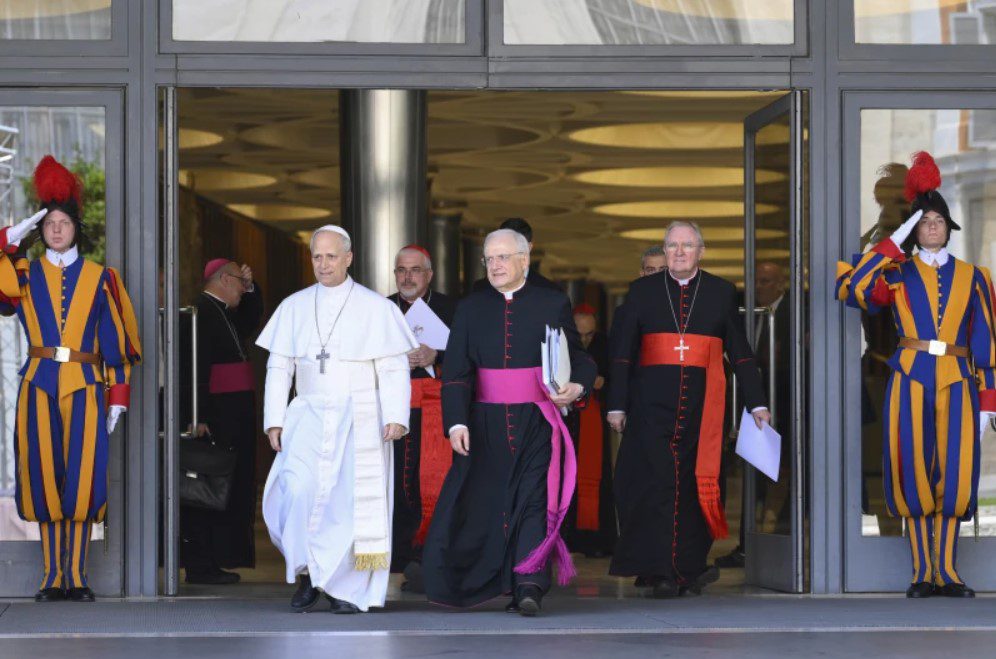Pope Leo XIV laid out the vision of his papacy Saturday, identifying artificial intelligence as one of the most critical matters facing humanity and vowing to continue with some of the core priorities of Pope Francis.
But in a sign he was making the papacy very much his own, Leo made his first outing since his election, traveling to a sanctuary south of Rome that is dedicated to the Madonna and is of particular significance to his Augustinian order and his namesake, Pope Leo XIII, reports AP/UNB.
Townspeople of Genazzano gathered in the square outside the main church housing the Madre del Buon Consiglio (Mother of Good Counsel) sanctuary as Leo arrived and greeted them. The sanctuary, which is managed by Augustinian friars, has been a place of pilgrimage since the 15th century and the previous Pope Leo elevated it to a minor basilica and expanded the adjacent convent in the early 1900s.
After praying in the church, Leo greeted the townspeople and told them they had both a gift and a responsibility in having the Madonna in their midst. He offered a blessing and then got back into the passenger seat of the car, a black Volkswagen. En route back to the Vatican, he stopped to pray at Francis’ tomb at St. Mary Major Basilica.
The after-lunch outing came after Leo presided over his first formal audience, with the cardinals who elected him pope. In it Leo repeatedly cited Francis and the Argentine pope’s own 2013 mission statement, making clear a commitment to making the Catholic Church more inclusive and attentive to the faithful and a church that looks out for the “least and rejected.”
Leo, the first American pope, told the cardinals that he was fully committed to the reforms of the Second Vatican Council, the 1960s meetings that modernized the church. He identified AI as one of the main issues facing humanity, saying it poses challenges to defending human dignity, justice and labor.
Leo referred to AI in explaining the choice of his name: His namesake, Pope Leo XIII, was pope from 1878 to 1903 and laid the foundation for modern Catholic social thought. He did so most famously with his 1891 encyclical Rerum Novarum, which addressed workers’ rights and capitalism at the dawn of the industrial age. The late pope criticized both laissez-faire capitalism and state-centric socialism, giving shape to a distinctly Catholic vein of economic teaching.
In his remarks Saturday, Leo said he identified with his predecessor.
“In our own day, the church offers everyone the treasury of its social teaching in response to another industrial revolution and to developments in the field of artificial intelligence that pose new challenges for the defense of human dignity, justice and labor,” he said.
Toward the end of his pontificate, Francis became increasingly vocal about the threats to humanity posed by AI and called for an international treaty to regulate it.
Francis in many ways saw the Chicago-born Augustinian missionary Robert Prevost as something of an heir apparent: He moved him to take over a small Peruvian diocese in 2014, where Prevost later became bishop and head of the Peruvian bishops conference, and then called him to Rome to take over one of the most important Vatican offices vetting bishop nominations in 2023.


